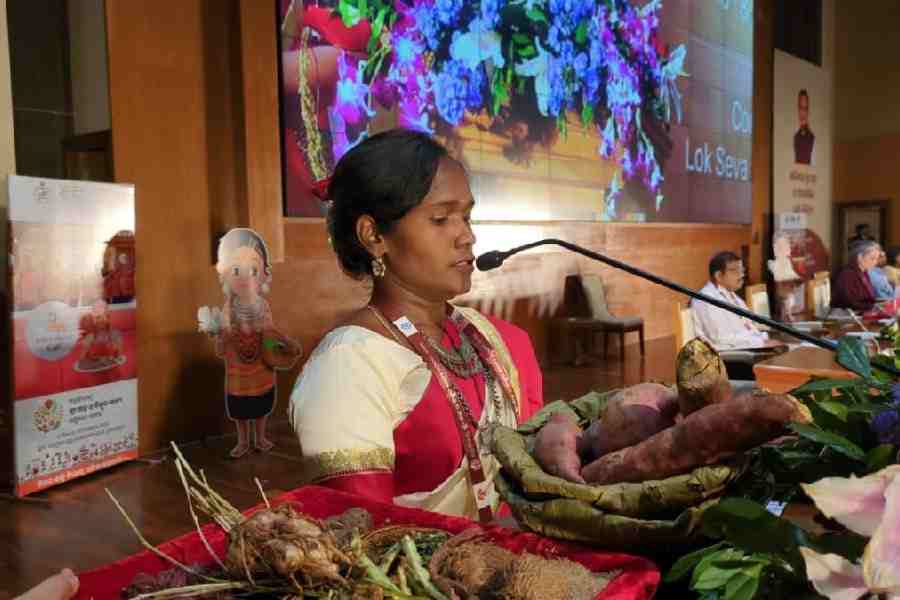Pyari Tutti, a 29-year-old tribal farmer from the Similipal National Park area of Mayurbhanj district, shared the dias with senior officials at the Lok Seva Bhawan Conference Hall (state secretariat) on Monday and spoke of her experience of earning more than ₹80,000 by cultivating the forgotten fruits of arrowroot and millets.
Sharing her experience, Pyari, a graduate, said: “I hail from the tribal area ...from the core area of Similipal. My father was toiling hard without earning too much. Even I tried to get a job. After failing to get a job. I decided to take up farming and concentrate on cultivating arrowroot.”
The young girl said, “Now I have been able to earn a good amount of money from cultivating arrowroots. Besides, I am cultivating other products like millet and earning a good amount of money. But the government should fix a selling price of the forgotten fruits so that we can be benefitted and not be exploited by the traders.”
She said, “I am now economically independent and able to look after my two brothers and sisters and my parents.”
She was attending the two-day International Symposium on Shree Anna and Forgotten Foods (ISSFF), which was organised by the Odisha government’s agriculture department.
Like Pyari Tutti, tribals from different pockets of the state attended the two-day function organised by the state level to showcase their knowledge of preserving ancient foods and their methods of cultivation.
Various kinds of millet and forgotten foods were demonstrated at the symposium. Steps are being taken to cultivate forgotten fruits like millets, jackfruits and many others, which, if cultivated, would certainly add the required nutritional values to the food chain. Another farmer, Duryodhan Jani, aged 50, from the Dussapala area
of Nayagarh district, said: “ I have been able to earn a good amount of money by cultivating millets.”
Country head, World Food Programme, Elisabeth Faure, also stressed on how the Odisha government’s effort in bringing forgotten fruits into the limelight would help the food security chain in the state.
Chief minister Mohan Majhi urged the people of the state to offer food prepared from millet before Goddess Lakshmi on the occasion of the upcoming “Manabasa Gurubara” in the Odia month of “Margasira”.
Deputy chief minister KV Singh Deo said, “Mohan Majhi government is committed to providing all support to the farmers. Odisha is playing a key role in reviving millet, the nutrient-rich forgotten crop.”
Another deputy chief minister Pravati Parida said, “We are planning to introduce millet as food for students in the schools. We should consider giving MSP (Minimum Support Price) on millets. Members of Mission Shakti have been involved in the millet trade and doing ood business.”
Principal secretary of Agriculture and Farmers’ Empowerment, Dr Arabinda Kumar Padhee, said: “Odisha has been successful in documenting more than 700 varies of landscapes under the Protection of Plant Varieties and Farmers’ Rights Authority. Under Shree Anna Abhiyan (Formerly Odisha Millet Mission) and Integrated Farming System Programmes, landraces from over 500 remote villages have been mapped
and documented.”
He said: “Experiences from Shree Anna Abhiyan show that many traditional varieties give good yields, are better in nutrition and are adapted to local climates.”
Dr Padhee added: “For the first time in the country, four landraces, namely Kundrabati, Laxmipur Kalia, Malyabanta Mami and Gupteswara Bharati, have been notified as varieties.”











